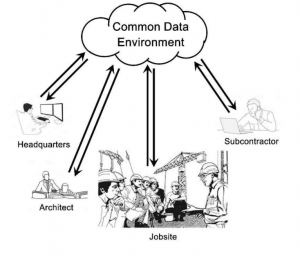
3 Ways an Open CDE Has Radically Improved Productivity for Innovative Construction Companies
In our previous blog, we took a detailed look at how a Common Data Environment (CDE) can provide construction teams with operational advantages that enable them to work more efficiently, save time, and reduce errors. A CDE provides a central repository for all aspects of construction content management, including storing and accessing design files, bid documents, specifications, images, videos, change orders, and markups - everything that makes up the content that defines a construction project.
A CDE works on many levels to improve construction workflows, but ultimately it delivers three essential benefits that can be real game changers for general and specialty contractors as well as for overall project success. These include:
Sharing project information in a secure fashion
Construction information is so important at every stage of the construction project that team members will find ways to share that information any way that works. If you have standard processes and procedures designed to ensure the integrity of your project data, those rules count for little if they become obstacles to getting work done.
In the age of digital content, getting the information you need often means using solutions that are readily available in the moment, like email and Dropbox, simply because they are fast, easy and sometimes free. These kinds of tools have poor security and weak or no version control, and they become useless when there are internet service outages, something that often happens at construction sites. This results in time wasted looking for information, duplicate files, and different people working off of different versions of the same file.

Some companies try to overcome these risks by putting expensive servers at jobsites and using costly VPN connections to a data center. Some even completely rebuild project files daily and physically take them, or ship them on hard drives to job sites or HQ. This is expensive, and the risk of project delays due to damage or theft is high.
A CDE simplifies the entire data sharing and securing process. A good example is the case of Devcon, a large California-based construction firm. At any given time they are working many projects with a small army of subcontractors.
Collaborate from pre-construction to closeout
Lifecycle content management for any construction project can be a challenge. During every step of the construction process, from early design, bidding and awarding contracts, to actual construction which generates modifications and its own set of new content, to closeout, different people use, change and add to the body of project content. In a typical construction workflow, there can be thousands of content exchanges and handoffs, each one creating an opportunity for lost or mismatched data.
Closeout can represent a difficult, time-consuming process for subcontractors as this is the critical piece to securing their portion of the retainage, - a common practice in the construction industry. The subcontractor must assemble the necessary documentation to prove the work was completed as specified. If they fail to do so, they could lose some or all of their final payment. In short, if a subcontractor cannot secure the retainage at the end of the project because of lack of documentation, it can easily eat up their profit from that project and have a significant impact on the overall health of their business.
Maintaining continuity of project content from start to finish is fundamental to the success of a project. But maintaining that continuity can be challenging without a CDE.
For Balfour Beatty, a large US construction firm, solving problems related to lost data, unrecoverable backups, and data security across all phases of a project were principal reasons for moving to a hybrid, auto-syncing CDE. Before making that change, they used a costly process that involved local servers and VPN connections. When they won an $800 million airport contract, they realized this approach would be too expensive and create too much data risk for a project of that size.
Their CDE solution allowed them to maintain one content repository while using the platform’s granular permissions to manage access for the different teams and subcontractors across the country. This ensured content integrity and enabled everyone involved to use the same digital workspace to access information as they moved through various phases of construction. It also helped Balbour Beatty realize over $5 million in cost savings on that one project.
These three benefits, secure file sharing, the ability to view all content from one workspace on any device anytime anywhere, and end-to-end content continuity for collaboration, work together to produce more efficient workflows, lower IT costs, and increase productivity and overall profits.
Photo by Christopher Burns on Unsplash






